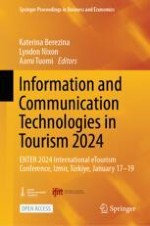1 Introduction
2 Study Background
3 Method
“goal = match YouTube review to the best fitting review topic from a list of topics”steps = “1. Break the list of reviews onto separate reviews using the ‘\n’ symbol as a separator”;
Combined categories | YT (1,852) | WB (2,980) | % YT | % WB | DIF |
|---|---|---|---|---|---|
Admiration and role model | 1257 | 1768 | 54.5% | 49.1% | −0.10 |
Beauty of simple life | 588 | 867 | 25.5% | 24.1% | −0.06 |
Chinese traditions | 321 | 559 | 13.9% | 15.5% | 0.11 |
Food and cooking | 141 | 407 | 6.1% | 11.3% | 0.61 |
TOTAL | 2307 | 3601 | 100.0% | 100.0% |
4 Results
Identified comment categories in which existential authenticity is expressed | Upvotes per comment | Ln | ||
|---|---|---|---|---|
WB | YT | Adj. YT | (WB/Adj. YT) | |
11. Desire to live a peaceful, natural, simple, & self-sufficient life | 0.7 | 575.4 | 187.8 | −5.56 |
8. Ziqi's role model status (disciplined, focused, hardworking, & skilled) | 0.9 | 262.6 | 85.7 | −4.57 |
12. Nature & rural life | 1.5 | 241.2 | 78.7 | −3.94 |
1. Admiration & praise for Ziqi | 10.6 | 268.1 | 87.5 | −2.12 |
13. Nostalgia & childhood memories | 149.3 | 117.8 | 38.4 | 1.36 |
3. Desire to learn from Ziqi & replicate her creations | 281.5 | 409.8 | 133.7 | 0.74 |
10. Beauty and aesthetics of traditional life & products | 184.5 | 292.0 | 95.3 | 0.66 |
